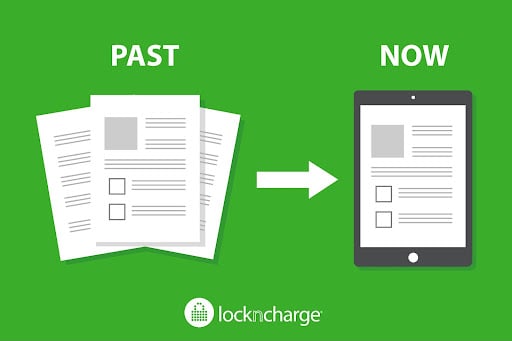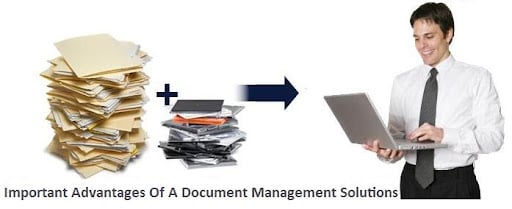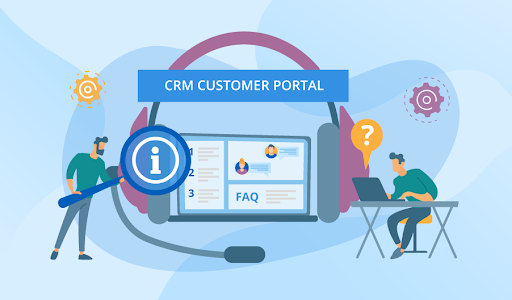
You’ve probably heard the phrase “paperless office” thrown around in business circles. The paperless office has become a popular ideal to strive for, due to our increasingly digitized work environments. It also happens to be an ideal that’s a great fit for any tax office.
The aims of a paperless office are to reduce waste, streamline record organization, and increase workplace efficiency. Advancements in office technologies have made the goal of a paperless office achievable for many organizations, big and small.
The paperless office can be called a digital office or even a virtual office, in some cases. The digital office makes use of digital files, of course. Everything that was once recorded on paper can now be documented electronically: identification, invoices, payment receipts, financial records, business registrations, bank statements, personnel files, etc.
Adopting an electronic document management system can reduce clutter and workload related to filing, organizing, finding and printing physical records.

What Is a Paperless Office?
Let’s start with a clear and simple definition. A paperless office refers to a work environment equipped with a system that relies on electronic documents instead of paper ones for its workflow procedures, information processing, and record keeping.
It may be more accurate to use the term “paper-light” in most cases. Many organizations do still need to make use of paper print-outs to some degree. Even in today’s digital era, the majority of offices and departments will include a printer. It is very rare to find an office that never uses one.
A truly paperless office may have issues satisfying client preferences or abiding by compliance measures. But even if a workplace cannot completely eliminate paper, it can create the structure for an all-digital office. That will prepare the workplace to become fully digital in the future, when it becomes the norm for businesses. It is a forward-looking approach.
A business that seeks to introduce paperless document management in a brief period of time can run into a lot of issues. Employees and clients are likely to resist a sudden change. So it is a good idea to begin the transition and let people gradually adjust to the procedural changes. You can anticipate a more digital approach to work management in the future. It would be smart to start planning on going paperless sooner rather than later.

A Cost-Saving Measure
A paperless initiative can be a very practical option. Even if your workplace cannot achieve a 100% paperless environment, the benefits of having a paper-light office are considerable. Not only will you spend less on paper, you will need fewer filing cabinets and less office space dedicated to physical records keeping. You will also spend less on postage.
Estimates show that US-based companies incur paper printing costs amounting to over $120 billion per year. A large percentage of these printed forms end up as waste within three months of being produced. A company can easily trim costs by reducing this wasteful reliance on paper.
Then there’s the issue of productivity loss. In some industries, employees can spend as much as 30-40% of their clocked-in time searching for documents in physical filing systems.
Document safety and security is another major concern. The destruction of physical files due to an event such as a fire or a flood can be devastating. More than 70% of offices would fold within three weeks should they suffer such a loss, according to some studies.

Powerful Benefits
Going digital can solve your productivity issues and lead to great savings. An electronic filing system offers many advantages, including document safety and security, faster searching, streamlined organization, and less paper waste.
Check out the many benefits that can come out of using a paperless system:
- Cost savings – You will be able to cut down on the expenses of printing and storing documents. With electronic file storage in place, you won’t need a lot of binders and filing cabinets taking up space. You’ll save on physical office space as well! And with less of a reliance on print-outs and photocopies, you’ll also save on ink and cartridges.
- A productivity boost – With a physical document management system, office workers can spend a lot of time looking for and retrieving paper records. Or they may get stuck in long queues for the office printer, which can only handle so many jobs. Either way, you can boost workplace efficiency by doing away with such unproductive tasks. With a digital system, employees can find a document easily by typing a keyword or client’s name in the search function. That saves so much time!
- Improved document safety – You won’t have to worry about damage to physical documents. The files can be saved to your computer’s hard drive and backed up in external storage. For utmost safety, save extra copies of files in cloud storage. You can find software solutions that can handle such a task automatically. Sure, electronic files can get deleted or corrupted. But if you have backup copies (which is easy to achieve automatically), that won’t be a problem.

- Better security – You will have full control over who gets to view any document in your electronic filing system. Although a digital file manager can allow your employees to easily find documents, you can use the same software to set file permissions for anyone. That means you can restrict file access to specific staff members. Keep unauthorized personnel from viewing important files. Prevent any unauthorized changes! Additionally, you can track who has accessed a particular file and when they viewed it. Trouble-free file security!
- Better file organization – Software can simplify many tasks involving document organization and file categorization. Files can be indexed and searched easily. Most of the time, this can be done merely by employing document filenames and time stamps. But you can also use tagging systems that let you organize files by keyword.
- Easier networking and teamwork – Electronic files can easily be shared between staff members with authorized access. That’s a great boost to intra-office collaboration and teamwork. People can view and compare the updated and former versions of documents. They can add comments and possibly even view changes in real time.

How to Go Paperless
Set on transforming your workplace into a paperless environment? You may be wondering where to start. Here are the steps you can take to make it happen.
- Look for a good software solution – You should start by learning what digital systems you can apply in your workplace. Check out what other workplaces are using. Especially workplaces in the same industry. Familiarize yourself with the “bells and whistles” provided by each software option.
- Take cost into consideration – You don’t have to employ the same software platform that another office is using. Many corporate offices can easily afford the leading market option. But if you are running a small or medium-sized business, you may want to get a more cost-effective software package. You can find a document management system that does exactly what you need without a ton of extraneous functionality. And more affordable, too.
- Begin the process of digitization – One of the “growing pains” you will encounter is the file digitization stage. This is a necessary hurdle that can prove laborious and time-consuming. You’ll have to assign some staff members the painstaking task of scanning physical records to turn them into electronic files. Throughout the process, keep in mind that all this effort will end up saving you time and money once everything has been digitized.
- Training your staff – You will want to educate your team on new policies and procedures for documents. Give them time to learn the software. Keep them motivated by emphasizing how the new system will relieve them of tedious tasks.

Choosing Office Management Software
You can find various office management applications in the market. Obtaining this software will be the first step in turning your tax office paperless. Take your time to study the many options available.
ProClient is one of the leading options for any tax office. Let’s have an overview of how ProClient can make a paperless office a reality.
With ProClient, you’ll get a suite of software tools that help you streamline the tax office workflow. It is aimed at making document management, team management, billing and invoicing, appointment scheduling, and CRM tasks more efficient to do.
One of the key features of ProClient is its Document Center, which is hosted on the cloud. That means electronic documents are safely and securely placed in cloud storage. You can access the documents from any device that is connected to the Internet, if you have a ProClient account along with all the required permissions.

The software suite also includes ProClient Portal, which provides an online interface for clients to access. Each client is assigned their own individual client portal, which they can use to securely send documents to your office. These documents are in the form of digital files that are uploaded to cloud storage via the client portal.
You can use ProClient to keep records on documents, clients, team members, appointments, accounts, and messages without needing to use actual paper. You don’t even have to be in your office to access ProClient for the data you need. Open the ProClient app in your laptop, connect to the Internet, and log in. It’s that simple.
Try a free demo of ProClient today!



